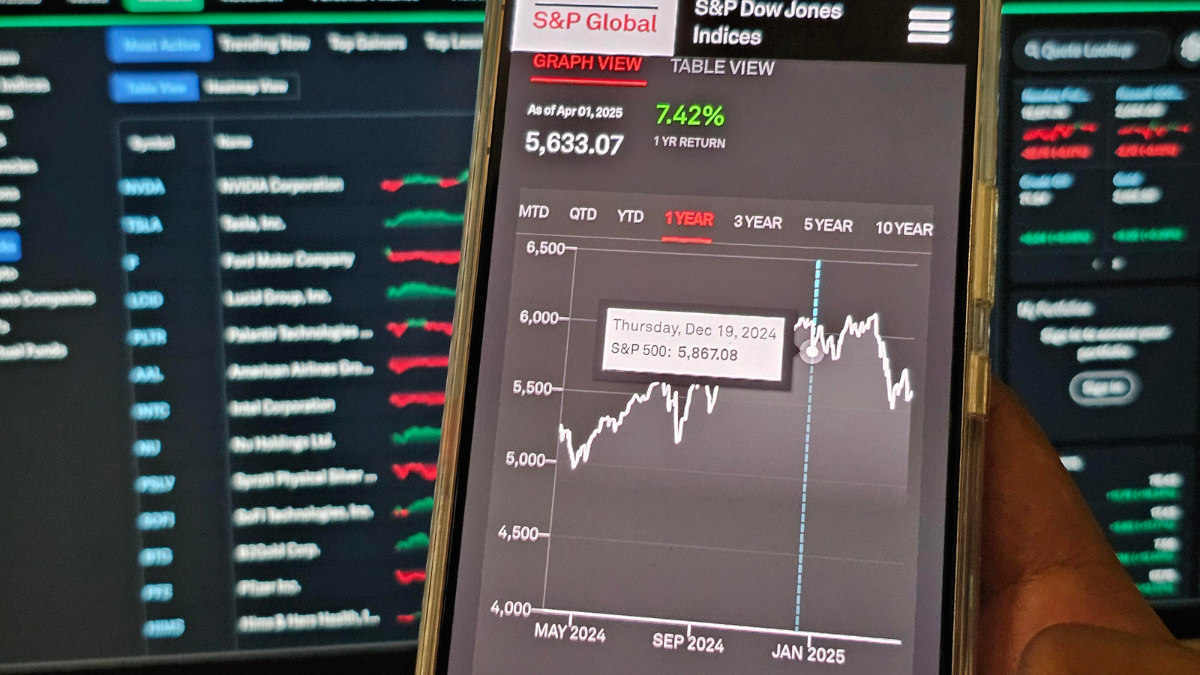A beginner-friendly guide to investing: How to start growing your wealth in M’sia
Here's a beginner's guide to investing in Malaysia, from identifying your risk tolerance, how to get started, and the types of investments.

Disclaimer: This article is for educational and informational purposes only. It is not intended to be a substitute for financial advice. Readers are encouraged to do their own research before arriving at any conclusions based solely on this content. Vulcan Post disclaims any reward or responsibility for any gains or losses arising from the direct and indirect use and application of any contents of the written material.
Ah, investing. Personally, when the topic comes up I tend to leave the conversation to just talk to the girlies about the latest Lana Del Rey album, or the next Severance episode.
But since I’ve started my days of spending my own money on, well, everything, the idea of “free” money seems more and more appealing. But with all the confusing technical jargon and financial terms on even introductory articles, I keep getting scared back to just doomscrolling on Twitter.
Well, if this sounds like your case too, fret not, for I have scoured the interwebs, watched podcasts by crypto bros, and talked to finance bros to put together an actually beginner-friendly guide to investing so that someday, you could dip your toes into these waters.
In·vest
/ɪnˈvɛst/ verb
Put (money) into financial schemes, shares, property, or a commercial venture with the expectation of achieving a profit.
In simpler terms, investing is the act of using your money for the purpose of getting more money in the future, instead of just letting it sit around in your bank account or as cash.
It’s important to note that investing is highly personal, heavily depending on various variables in one’s life, such as financial position, earning power, life circumstances like commitments and dependants, personal goals and even emotional readiness.
All of this forms the foundation of your investment strategy. As such, it’s highly recommended to perform your own research or consulting, whether with experienced friends or even experts, to gauge which execution works best for you.
But why?
“Is investing really worth all this though? What if I already have a stable career?” you might be asking.
The fact of the matter is, investing isn’t just something bored finance bros do so they can spend more time being bored; rather, it’s a necessary practice to maintain the value of your savings so you can secure a stable future.
This is due to the concept of time value of money (TVM). It surmises that money is worth more now than at a future date based on its earning potential. Because money can grow when invested, any delay is a lost opportunity for growth.
As such, money that is not invested or earning interest not only loses its potential of gaining value, but would also depreciate due to inflation.
Essentially, investment is a necessary step of ensuring that your savings don’t turn into peanuts over the years.
A look in the mirror
Firstly, it’s important to evaluate yourself and your risk tolerance.
That means establishing your capacity of dealing with an unfavourable outcome or return from an investment.
Most investments with a higher risk come with a higher chance of rewards. From this, you should keep in mind the amount of money you can afford to lose before going forward with a risky investment.
That said, there are several low-risk investments you can still go through with. From fixed interest rates in savings accounts to the Employee’s Provident Fund (EPF), there exist several ways to keep your money’s value from naturally depreciating without risking losing it all.
For those with a little more tolerance to risk, however, high-risk investments into assets like cryptocurrency, startup stocks, and commodities are available, giving the chance for adventurous investors to earn higher returns.
Once you’ve established your risk tolerance, let’s set some goals and expectations. How much are you hoping to earn? What is your timescale? How much time and effort can you regularly put into managing your investments?
All these need to be considered when building your investment portfolio, a collection of financial investments like stocks, bonds, commodities, cash, and cash equivalents, including closed-end funds and exchange-traded funds (ETFs).
“So, I have to make multiple investments now?”
Well, the key to having a successful investment plan is diversification. It involves investing capital into various financial instruments, industries, and other categories to reduce risk and maximise returns. In other words, it’s a way of keeping your eggs in multiple baskets.
The sample portfolio allocation pictured above is for an investor with a low tolerance for risk. In general, a conservative strategy tries to protect a portfolio’s value by investing in lower-risk securities.
We cover what these investment types mean and how they work below, but in a nutshell, this portfolio gives investors near-guaranteed returns, and lower risks, while addressing the average person’s liquidity needs.
That said, there might be variances to your needs, so it’s recommended that you fully understand your needs, goals, and capabilities before deciding on a portfolio.
So we begin
Now that you’ve decided on your goals and risk tolerance, let’s look at some beginner-friendly investment vehicles.
Employees Provident Fund (EPF)If you’ve held a full-time position before, you’re probably already familiar with EPF. In short, EPF is a savings and retirement plan for private sector workers in Malaysia. It is a statutory contribution here, meaning employers are required to match their employees’ regular contributions.
Like most retirement schemes, however, a total withdrawal can only be made at ages 50, 55, and 60. Partial withdrawals can be made before that, but only from your Akaun Fleksibel.
Returns: 6.30% dividend rate (2024)
Who’s it for: Everyone! Voluntary contributions can also be made for those self-employed.
Fixed Deposit Savings AccountAgain, another form of investment most are familiar with. Savings accounts that offer a Fixed Deposit (FD) guarantee a high return over the long term.
Unlike a conventional savings account that earns daily interest and allows for withdrawals at any time, an FD restricts access to money you have invested.
Below are some comparisons between major banks and their primary FD rates. Note that these rates are subject to change and most banks also offer different rates if you fit a certain criteria.
| Alliance Bank | 2.75 | No |
| BSN | 2.7 | No |
| Standard Chartered | 2.65 | No |
| UOB | 2.6 | No |
| OCBC | 2.6 | Yes |
| Public Bank | 2.5 | No |
| Maybank | 2.5 | Yes |
| RHB | 2.5 | Yes |
| HSBC | 2.5 | Yes |
| CIMB | 2.5 | Yes |
| AmBank | 2.45 | No |
| Hong Leong | 2.3 | Yes |
| Affin Bank | 2.3 | Yes |
Returns: 2-3% per annum
Who’s it for: Long-term investors and those with minimal risk tolerance.
Unit Trust Funds (ASB/ASM)Unit trusts are defined as a collective investment instrument, in which investors’ capitals are pooled together into a single fund to be managed by a professional fund manager. The accumulated fund is then invested into various equity portfolios, fixed-income securities, and other assets. The funds may be invested in various types of businesses and companies based locally and abroad.
One of the most accessible unit trusts is Amanah Saham Nasional Berhad (ASNB), which offers Amanah Saham Bumiputera (ASB) and Amanah Saham Malaysia (ASM) to bumiputera and all Malaysians respectively.
The unit price of the ASB fund is RM1, with any cost or redemption fee of these units being covered by ASNB. Capital investment into either of these funds is guaranteed by the Malaysian government, making it a low-risk investment.
Returns: 5.75 cents per unit for ASB; 2.16 cents per unit for ASM with a 2.92% income yield
Who’s it for: Long-term investors with minimal risk tolerance and low capital. Also great for those with less time to manage their investments.
BondsWhen a large company or government requires a large sum of money, one of the easiest ways to fulfill this fund is by taking up a loan. Often, however, the funds they need usually outscale the amount that banks can offer. So the best way for them to gather their funds is by issuing bonds to the public.
Investors will then lend these companies money by purchasing the issued bonds, and after a certain period, the company will pay back the amount borrowed. While waiting for the end of that period, the company will regularly pay you interest at a predetermined interest rate also referred to as a coupon.
Some of the corporate bonds (in the form of loan stocks) in Malaysia are listed on Bursa Malaysia.
However, most of these instruments are issued on a private placement basis and are traded over the counter. As these bonds are issued without a prospectus, the instruments could only be issued or offered to a restricted list of investors as specified under the Capital Markets and Services Act 2007 (CMSA).
Take note that when an investor buys a bond, they become a creditor of the issuer. However, the buyer does not gain any kind of ownership rights to the issuer, unlike equity investments.
Returns: 3.80% for Malaysian government bonds; 4-5% for corporate bonds
Who’s it for: Short-mid-term investors able to afford a higher capital and with a low to moderate risk tolerance.
Money Market FundsA money market fund is a kind of mutual fund that invests in highly liquid, short-term instruments including cash, cash equivalent securities, and high-credit-rating, debt-based securities with a short-term maturity.
Money market funds are intended to offer investors high liquidity with a very low level of risk. Returns are dependent on the applicable market interest rates, and therefore, the overall returns from the money market funds are also dependent on interest rates.
Returns: Variable
Who’s it for: Short-term investors with a low-risk tolerance and higher capital.
StocksNow, let’s talk stocks. Also known as equity, stocks are a security that represents the ownership of a fraction of the issuing corporation. Units of stock are called shares, which entitle the owner to a proportion of the corporation’s assets and profits equal to how much stock they own.
Stocks are bought and sold predominantly on stock exchanges and are the foundation of many individual investors’ portfolios. Stock trades have to conform to government regulations meant to protect investors from fraudulent practices.
There are various types of stocks, but the two that beginners might want to focus on are blue-chip stocks and Exchange Traded Funds (ETFs).
Blue-chip stocks are shares of large, well-established, and financially sound companies with a history of reliable performance. ETFs, on the other hand, are traded like stocks. They track market indexes like the S&P 500, and offer instant diversification, reducing the risk associated with individual stocks.
Returns: Highly variable, with limitless highs and lows
Who’s it for: Anyone (with time)! Blue-chip stocks offer lower risks while ETFs offer easy diversification. That said, there is a steep learning curve when it comes to picking the right stock to purchase.
A step further
Now that you know more about the opportunities available to you, there are several other investment vehicles that you could look into if you plan on further diversifying your investment portfolio. These include:
Commodities, such as gold and silver; Property, be it via Real Estate Investment Trusts (REITs) or residential investments; Cryptocurrency, such as Bitcoin and Ethereum; FOREX, or the trading of fluctuating currencies; and Venture capital, a highly risky form of buying stocks from startups and small businesses.But how?
Once you’re familiar with the various investment vehicles, you might be asking, “How do I get started?”
Again, this comes down to personal preference and the time and energy you’re willing to spend on getting this “art” right.
If you’re particular about where your money goes and are keen on actively learning through practice, self-directed investing could be the way to go.
This involves conducting your own research on current return rates, liaising directly with banks or companies, and evaluating the risks and potentials of various investments.
If you’re interested in going down this route, I would recommend browsing through educational websites like Investopedia and RinggitPlus; looking through introductory videos by YouTubers like Ziet Invests; and even taking some courses on investing through sites like LinkedIn and Coursera.
But, if you’re looking to take the easier route, seeking out professional wealth managers could ease the process greatly, and like investments, picking the right manager with the appropriate expertise could lead to higher and faster profits.
A new option that might be more feasible for millennials and Gen Zs, however, is robo-advisors. Powered by AI and algorithms, robo-advisors gather critical information about the investor and their risk profile to make suitable recommendations.
With little to no human interference, robo-advisors offer a cost-effective way of investing with services similar to what a human investment advisor provides.
Popular Malaysian robo-advisors include AkruNow, StashAway, and Kenanga Digital Investing (KDI).
The bottom line
If you’ve successfully made it to the end, congratulations! You probably have more questions now, but at least you know that you have the interest and drive to learn more about the complex, ever-evolving, and tumultuous world of investing.
Investing is a process that provides continuous learning, and although it may be demotivating to constantly have to learn and unlearn various aspects of this sphere, know that it is definitely a worthwhile effort in keeping your finances in check and ready for whatever comes.
Learn more about investing in Malaysia here. Read our digital banking pieces here.
 BigThink
BigThink 





























